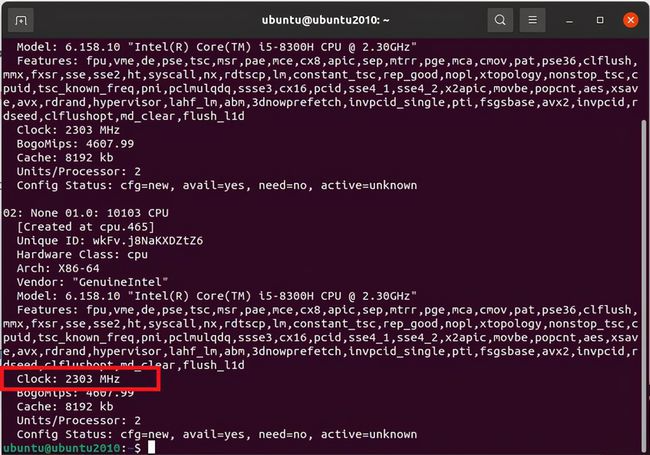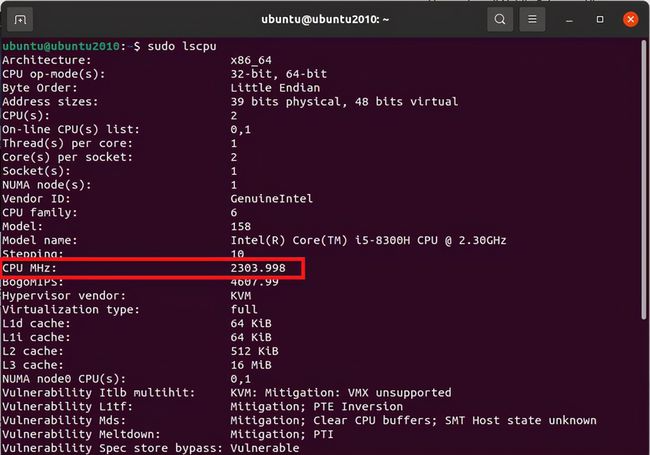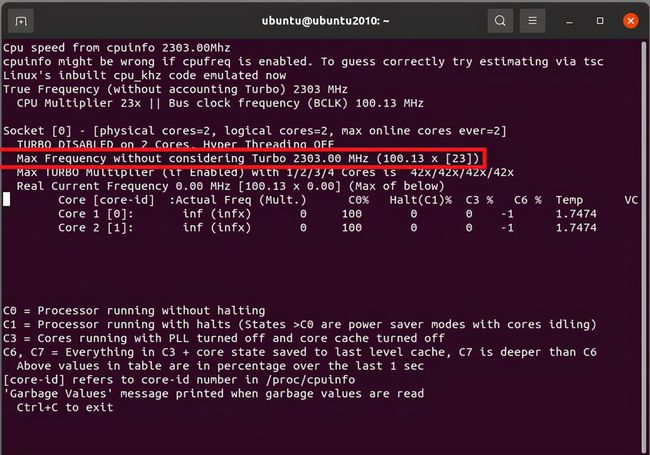 System Tutorial
System Tutorial
 LINUX
LINUX
 Beyond the limits! Seven Linux CPU optimization tips to make your system run fast!
Beyond the limits! Seven Linux CPU optimization tips to make your system run fast!
Beyond the limits! Seven Linux CPU optimization tips to make your system run fast!
With the development of computers, CPU has become an important bottleneck for system performance improvement. As a Linux user, you must want to know how to better utilize CPU resources and improve the operating efficiency of the system. This article will introduce seven efficient Linux CPU optimization techniques to increase your system running speed to new heights!
Method 1: Use hardinfo
Hardinfo is a graphical user interface (GUI) tool that generates reports on various hardware components. It is written in Gtk. However, it can also be run from the command line if no GUI display is available.
$ hardinfo | less

Method 2: From /proc/cpuinfo
/proc/cpuinfo system file lists each CPU core. The individual speed of the system.
$ cat / proc / cpuinfo | grep MHz

Method 3: Using Inxi Script
Inxi is a Linux script that allows you to print the hardware details of your system. To print processor-related details, use the inxi command with the ‘-C’ option:
$ sudo inxi -C

Method 4: Use hwinfo
In Linux, the hwinfo command displays detailed information about each hardware unit.
$ sudo hwinfo --cpu

Method 5: Use lscpu
Lscpu is a Linux command that displays CPU architecture details. This directive is included in the util-linux package.
$ sudo lscpu

Method 6: Using Dmesg
Dmesg displays messages from the kernel ring buffer and dumps them to /var/log/messages in Linux.
$ sudo dmesg | grep MHz

Method 7: Using i7z
i7z is a specialized tool for displaying processor status on Intel i3, i5 and i7 based CPUs.
$ sudo i7z

On Linux-based systems such as Ubuntu, Fedora, Debian, CentOS, etc., these commands can be used to check the CPU speed.
Through this article, we not only learned how to use CPU management tools and optimize kernel parameters, but also mastered techniques such as how to avoid frequent CPU switching and improve CPU cache utilization, so that our system can run faster and more stably. . As we can see, by optimizing Linux CPU, system performance can be significantly improved. So, let’s get hands-on and use these tips to achieve better system performance and increase our productivity!
The above is the detailed content of Beyond the limits! Seven Linux CPU optimization tips to make your system run fast!. For more information, please follow other related articles on the PHP Chinese website!

Hot AI Tools

Undresser.AI Undress
AI-powered app for creating realistic nude photos

AI Clothes Remover
Online AI tool for removing clothes from photos.

Undress AI Tool
Undress images for free

Clothoff.io
AI clothes remover

Video Face Swap
Swap faces in any video effortlessly with our completely free AI face swap tool!

Hot Article

Hot Tools

Notepad++7.3.1
Easy-to-use and free code editor

SublimeText3 Chinese version
Chinese version, very easy to use

Zend Studio 13.0.1
Powerful PHP integrated development environment

Dreamweaver CS6
Visual web development tools

SublimeText3 Mac version
God-level code editing software (SublimeText3)

Hot Topics
 1664
1664
 14
14
 1423
1423
 52
52
 1318
1318
 25
25
 1269
1269
 29
29
 1248
1248
 24
24
 Linux Architecture: Unveiling the 5 Basic Components
Apr 20, 2025 am 12:04 AM
Linux Architecture: Unveiling the 5 Basic Components
Apr 20, 2025 am 12:04 AM
The five basic components of the Linux system are: 1. Kernel, 2. System library, 3. System utilities, 4. Graphical user interface, 5. Applications. The kernel manages hardware resources, the system library provides precompiled functions, system utilities are used for system management, the GUI provides visual interaction, and applications use these components to implement functions.
 How to check the warehouse address of git
Apr 17, 2025 pm 01:54 PM
How to check the warehouse address of git
Apr 17, 2025 pm 01:54 PM
To view the Git repository address, perform the following steps: 1. Open the command line and navigate to the repository directory; 2. Run the "git remote -v" command; 3. View the repository name in the output and its corresponding address.
 How to run java code in notepad
Apr 16, 2025 pm 07:39 PM
How to run java code in notepad
Apr 16, 2025 pm 07:39 PM
Although Notepad cannot run Java code directly, it can be achieved by using other tools: using the command line compiler (javac) to generate a bytecode file (filename.class). Use the Java interpreter (java) to interpret bytecode, execute the code, and output the result.
 How to run sublime after writing the code
Apr 16, 2025 am 08:51 AM
How to run sublime after writing the code
Apr 16, 2025 am 08:51 AM
There are six ways to run code in Sublime: through hotkeys, menus, build systems, command lines, set default build systems, and custom build commands, and run individual files/projects by right-clicking on projects/files. The build system availability depends on the installation of Sublime Text.
 What is the main purpose of Linux?
Apr 16, 2025 am 12:19 AM
What is the main purpose of Linux?
Apr 16, 2025 am 12:19 AM
The main uses of Linux include: 1. Server operating system, 2. Embedded system, 3. Desktop operating system, 4. Development and testing environment. Linux excels in these areas, providing stability, security and efficient development tools.
 laravel installation code
Apr 18, 2025 pm 12:30 PM
laravel installation code
Apr 18, 2025 pm 12:30 PM
To install Laravel, follow these steps in sequence: Install Composer (for macOS/Linux and Windows) Install Laravel Installer Create a new project Start Service Access Application (URL: http://127.0.0.1:8000) Set up the database connection (if required)
 git software installation
Apr 17, 2025 am 11:57 AM
git software installation
Apr 17, 2025 am 11:57 AM
Installing Git software includes the following steps: Download the installation package and run the installation package to verify the installation configuration Git installation Git Bash (Windows only)
 How to use VSCode
Apr 15, 2025 pm 11:21 PM
How to use VSCode
Apr 15, 2025 pm 11:21 PM
Visual Studio Code (VSCode) is a cross-platform, open source and free code editor developed by Microsoft. It is known for its lightweight, scalability and support for a wide range of programming languages. To install VSCode, please visit the official website to download and run the installer. When using VSCode, you can create new projects, edit code, debug code, navigate projects, expand VSCode, and manage settings. VSCode is available for Windows, macOS, and Linux, supports multiple programming languages and provides various extensions through Marketplace. Its advantages include lightweight, scalability, extensive language support, rich features and version



